Exploring
SOCIAL,
ECONOMIC &
ENVIRONMENTAL dimensions to answer:
Is life in the tropics getting better?
The State of the Tropics project brings together leading research institutions from across the tropical world to assess the state of the region and to examine the implications of the immense changes the region is experiencing.
In 2014, Nobel Peace Prize laureate Aung San Suu Kyi launched the landmark State of theTropics 2014 Report. This wide-ranging study examined a broad set of social, economic and environmental indicators to answer a simple question:
Is life in the tropics getting better?
The State of the Tropics assessment demonstrates that nations in the region have made extraordinary progress in recent decades. However, significant challenges remain. There are increasing pressures on the environment, poverty remains rife in many regions, and many nations suffer from poor health, education outcomes and governance issues.
Rapid population and economic growth mean that the region's influence is set to rise dramatically. By 2050, the region will host most of the world's people and two-thirds of its children. The nature of the region's growing influence, and its global implications, will depend on how it addresses its many challenges, and whether it realises its potential and opportunities.
This online feature presents a snapshot of the key indicators assessed in the State of the Tropics 2014 Report. To download the full report and to access data for the indicators and additional information visit the State of the Tropics website.
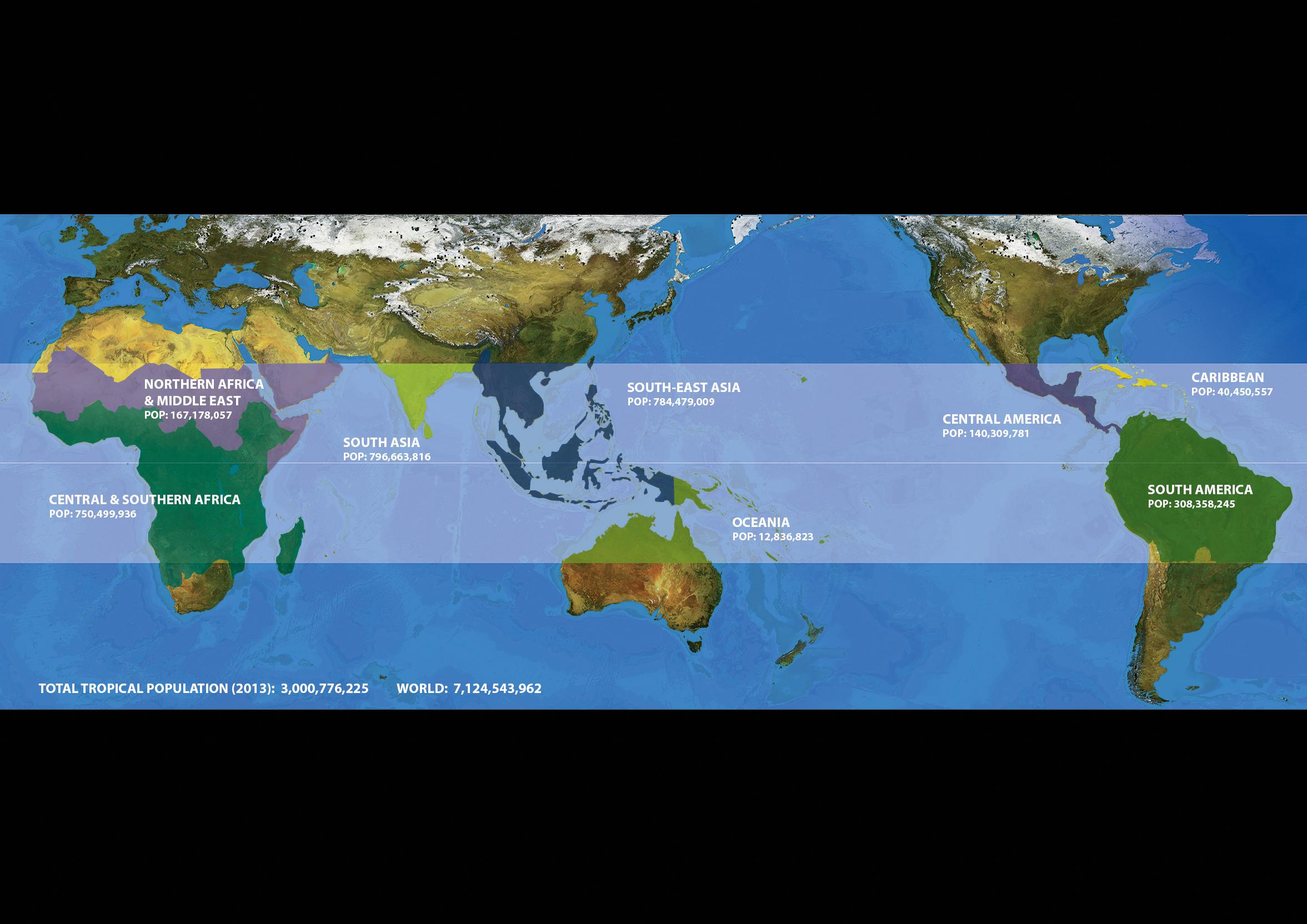
CLICK ABOVE to watch Aung San Suu Kyi launch the State of the Tropics report
AIR - LAND - WATER
"The earth, the air, the land and the water are not an inheritance from our fore fathers but on loan from our children" - Mahatma Gandhi (Photo: Juergen Freund)
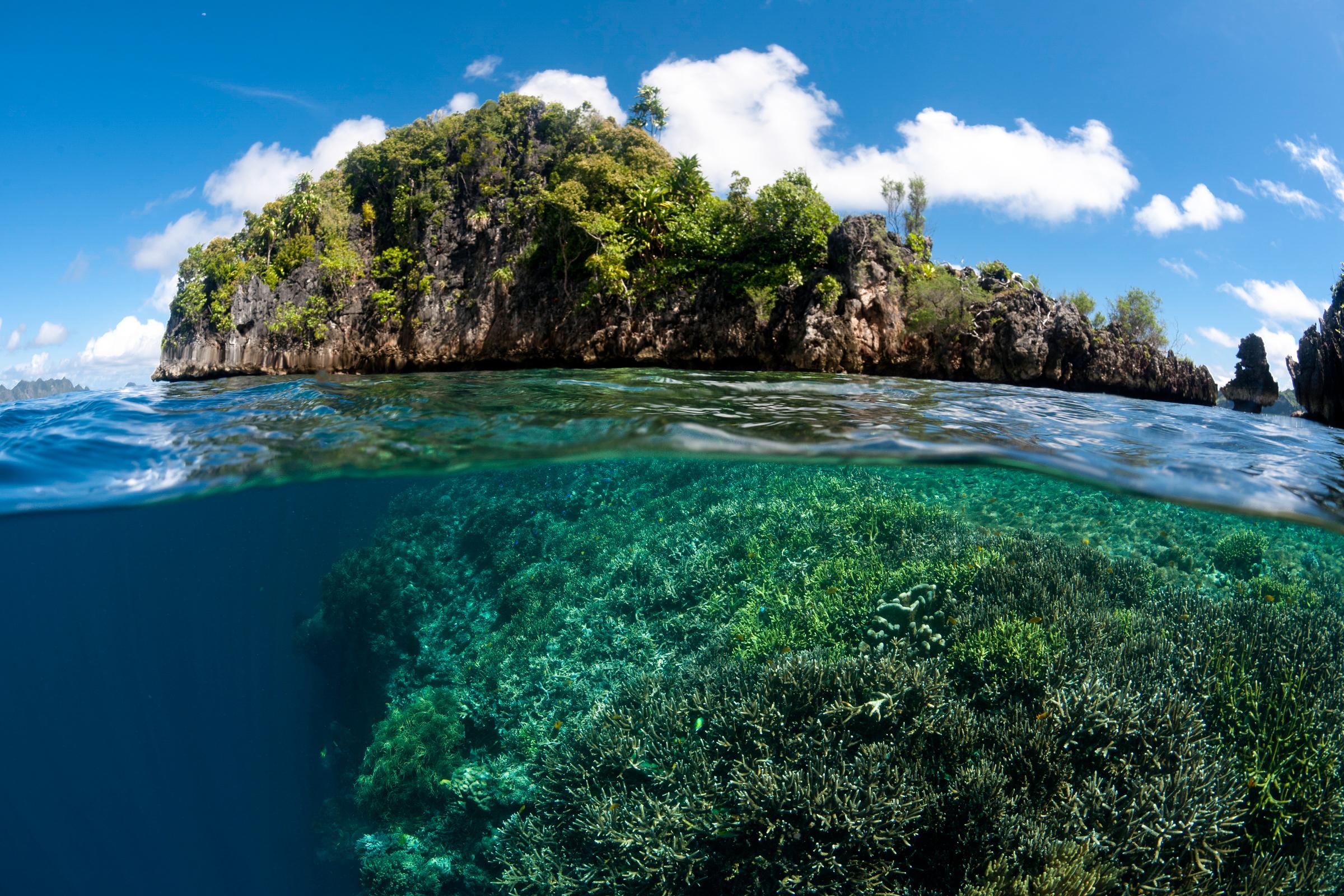
The AIR we breathe
Despite its critical importance to life on Earth the atmosphere is amongst the least known and appreciated of our global systems. It plays a vital role in the provision of essential ecosystem services, including providing the air we breathe, regulating climate, protecting life from damaging solar radiation, and being integral to the hydrological cycle.
Carbon dioxide & greenhouse gas emissions
Carbon dioxide and other greenhouse gases are important components of the earth’s atmosphere and their concentrations influence the planet’s climate. Human-caused increases in emissions of these gases, particularly over the last 200 years, threaten the environment and our relationship with it.
Emissions of these gases in the tropics is less than the rest of the world, although the region’s share of global emissions is increasing. Despite accounting for around 40% of the global human population, the tropics only contributes 15% of current greenhouse gas emissions. Emissions in the tropics are greatest in South-East Asia and South Asia, and although increasing rapidly, are still small relative to the rest of the world, particularly on a per capita basis.
Electricity supply
Electricity generated from coal and gas is the largest sectoral contributor to carbon dioxide and greenhouse gas emissions. Conversely, electricity generated from low carbon technologies and renewables may be regarded as low impact with regard to climate change effects. How energy is created, distributed and used is an important indicator of future climate change risks and sustainable development.
Since 1980 global electricity production has increased by 150%, with the relative contribution to global generation from the tropics increasing from 7 to 15% in the three decades to 2010. By comparison, the tropics accounted for 23% of all global renewable energy in 2010.
Air quality
Air pollution has both human and environmental impacts. Air quality indicators reflect a combination of industrial output, economic growth and environmental governance. From a public health perspective an important measure of air quality is the concentration of particulate matter less than 10 micrometres in diameter. Based on this measure, air quality has improved around the world in the 20 years to 2010. However, the extent of improvement is variable and is in part dependent on climatic and geographical constraints. Despite major improvements, no tropical region has yet reached the World Health Organization’s guidelines for healthy air quality.
The LAND that grows our food
Land degradation
Healthy land and soils are the basis of productive agricultural systems. Land degradation refers to the long-term loss of ecosystem function and services caused by disturbance from which the system is unable to recover without help. Land degradation affects the integrity and functioning of ecosystems and, along with climate change and biodiversity loss, is a major threat to the environment, economies and society. It is caused by a number of factors including poor agricultural practices, deforestation, overgrazing and industrial activity. Nearly a third of all land in the tropics became degraded between 1981 and 2003 compared to the global average of 20%. South East Asia had the greatest area of land degradation at 53%.
Agricultural land area
Most nations rely on agriculture for the majority of their food production and for many nations it is an important part of trade. Increasingly, agricultural land is also used to produce energy such as biofuels. As populations increase, demand for more agricultural land, and increased productivity from existing agricultural land, is rising.
Although the amount of land used for agriculture increased by only 2% in the tropics between 1980 and 2009, productivity of that land increased dramatically. For example, livestock production increased by 89% for cattle/buffalo and 44% for sheep and goats compared with much more modest growth in the rest of the world. Total cereal production in the tropics more than doubled in that time but still lags the rest of the world in terms of both tonnage and yield.
The WATER we drink
Renewable water resources
The state of the hydrological cycle and water quality are major factors contributing to ecosystem health and human wellbeing. The amount of fresh water available for ecosystems and human society is limited to only 0.3% of total water on Earth. Renewable water refers to the proportion of this available water that is regularly replenished. Efficient and sustainable use of this resource is critical for the maintenance of ecosystem services and human societies.
The tropics has 54% of the world’s renewable water resources of which a quarter is generated outside national borders. Despite having most of the world's water, almost half of the tropical human population was considered vulnerable to water stress in 2010. Current water use patterns are considered unsustainable in many regions. Agriculture accounts for 81% of water withdrawals in the tropics compared with 69% globally. Although tropical rivers are on average less polluted than those in the rest of the world, there is large regional variation, with South East Asia having the highest pollution discharge in the world.
CLIMATES OF THE TROPICS & HOW THEY ARE CHANGING
In this State of the Tropics focus essay, Dr Blair Trewin, a climate
scientist with the Australian Bureau of Meteorology, explains how climates
in the tropics work, how they have changed and what lies ahead.
View this essay
OCEANS
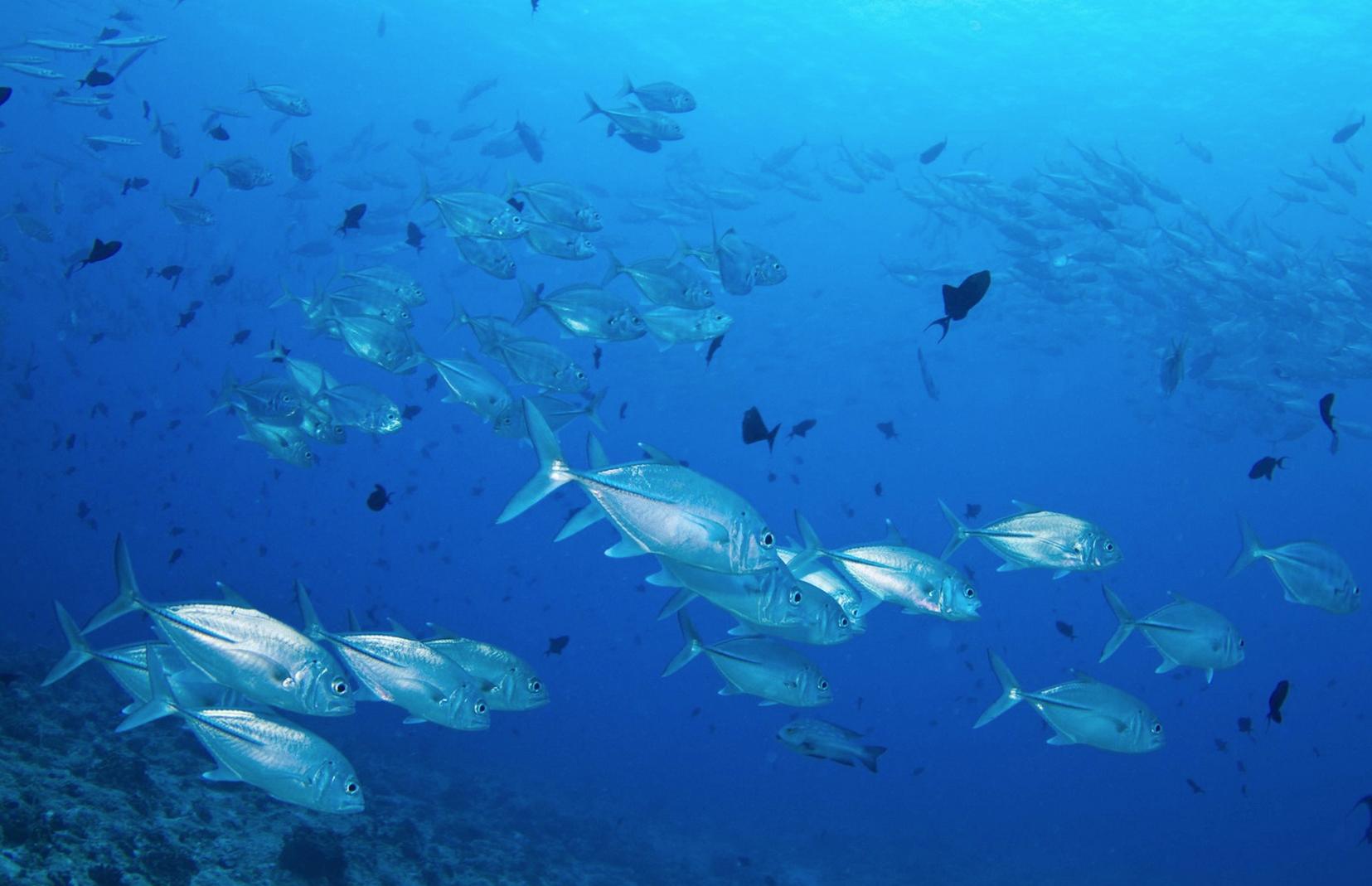
Oceans comprise 76% of the tropics by area. Tropical oceans are generally shallower and warmer than in other regions and tend to be lower in nutrients hence support lower densities of marine organisms. They do, however, support the most biologically diverse marine ecosystems on the planet.
Oceans, and in particular coastal marine waters, are fundamental to the health and wellbeing of many communities in the tropics with a large proportion of the human population dependent on marine resources for sustenance and livelihoods. Valuable income is also generated from coral reef and beach associated tourism. Oceans also provide important global protective, regulatory and supporting ecosystem services with their role as a carbon sink, in climate regulation and in nutrient cycling.
Marine Catch
Fish are the primary source of animal protein for many coastal communities worldwide. Communities that rely on small-scale fisheries are largely located in the tropics and about half the wild marine fish catch is taken by these small-scale operations. Commercial operations are also increasingly influential in the tropics. Sustainable management of marine catch is essential to maintain the ecological integrity of oceans as well as providing a sustainable resource for coastal communities into the future.
Globally, wild marine catch quadrupled between the 1950s to when it peaked in the mid-1990s. Since then catches outside of the tropics have declined or stabilised despite increasing fishing effort. By comparison, exploitation of wild marine resources in the tropics has grown rapidly over the past 60 years. Although lower in overall fish biomass, the tropics’ share of the overall global wild marine fish catch is increasing. Greater demand for seafood from a growing and increasingly affluent population, combined with better technology and greater fishing effort by international vessels in tropical waters, means pressures on marine fish stocks are likely to increase further.
Aquaculture
Aquaculture is the cultivation of aquatic organisms such as fish, crustaceans, molluscs and aquatic plants under controlled conditions. Increased aquaculture production is associated with a transition to more sustainable fishing practices. Assuming continued population growth and constant per capita demand for seafood, responsible aquaculture represents the best hope of both meeting demand and halting the decline of wild stocks.
In 2010, the tropics produced 36% of reported global aquaculture production, up from 26% in 1950. The rapid growth in tropical aquaculture, particularly of monocultures, has had negative environmental effects, including impacts on water quality and the introduction of invasive species. However, significant improvements are being made in productivity and environmental practices, including placing a greater emphasis on diversifying types of fisheries used.
Coral Reefs
The vast majority of coral reef systems are located in the tropics. They are the most biologically diverse marine ecosystems and provide a range of goods and services to tropical nations. For many nations, coral reefs are important for fisheries, provide protection to coasts and are an important source of income through tourism.
Coral reefs in all tropical regions are suffering from increased local and global threats. Impacts on reefs increased markedly between 1998 and 2010 with about 80% of all tropical reefs now considered to be at medium or high risk of damage.
The main local threats to reefs include coastal development, overfishing, destructive fishing practices, pollution and sedimentation. Increased water temperatures and ocean acidification are the greatest global threats. Loss of coral reef systems is having wider ecosystem and human well-being ramifications because of declining fish populations and erosion of protective services offered to coastal communities.
Mangroves
Mangroves are important nurseries and habitats for marine life. They help filter pollutants from land-based run-off and help protect nearby coral reefs, seagrass beds and coastal infrastructure. The tropics host nearly 95% of the world’s mangroves by area and 99% of all mangrove species.
Mangrove forests have decreased in area since 1980 in all tropical regions. The greatest threats to mangroves include illegal forestry, coastal development, impacts from aquaculture and pollution. Loss of mangroves increases the risk of adverse impacts of extreme weather events on coastal communities and contributes directly to losses of fisheries resources. Some tropical nations have recognised the value of mangrove ecosystems and are improving legislative protection as well as initiating reforestation efforts to improve coastal mangrove systems.
BIODIVERSITY
The variety of life on Earth
The tropics are home to >80% of the world's biodiversity (Photos: Mark Ziembicki)
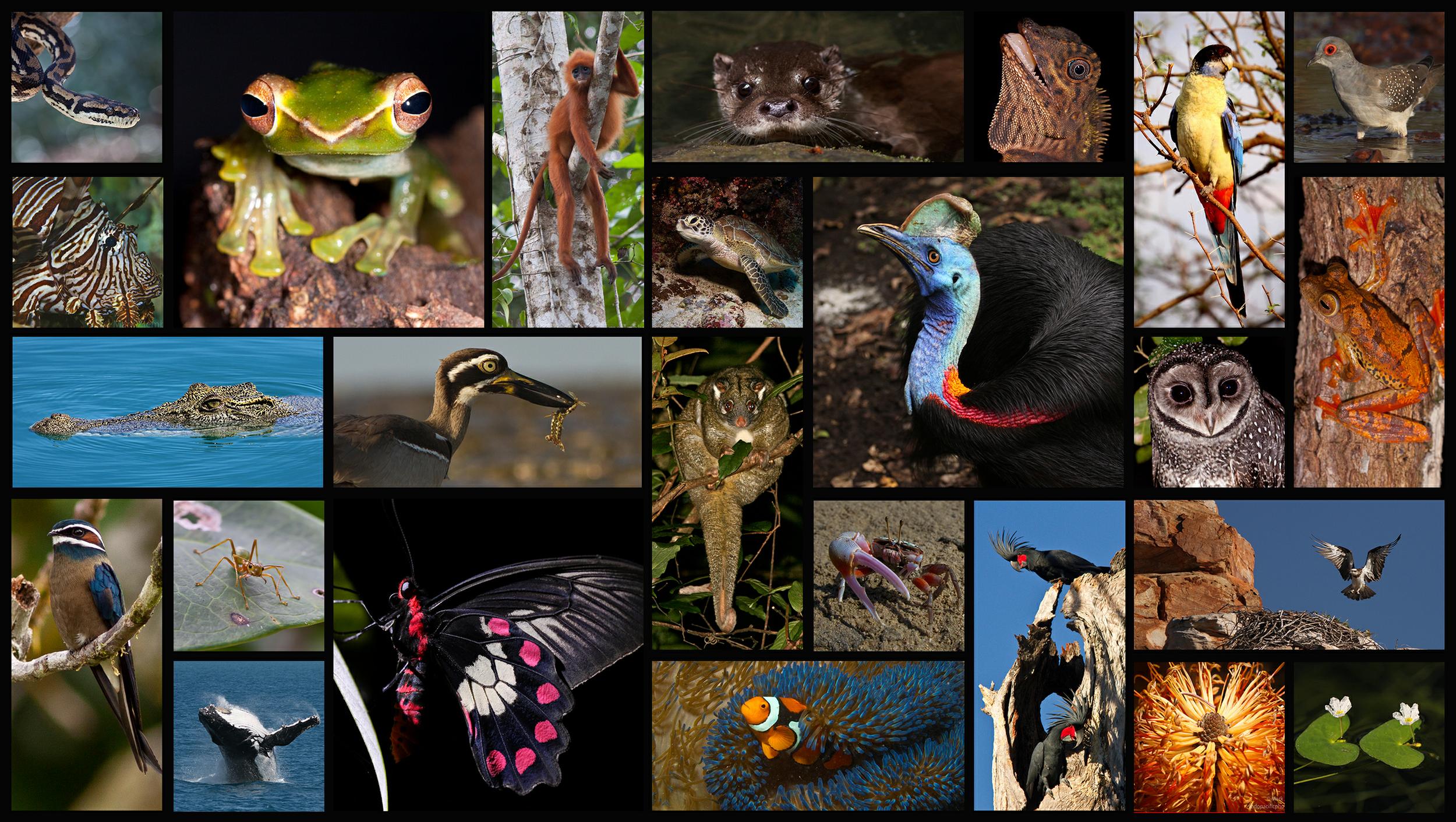
Biodiversity refers to the variety of life on Earth, including every species of bacteria, virus, plant, fungi, and animal, as well as the interactions between them and the ecosystems in which they live. The tropics are the most diverse region on Earth, hosting about 80% of the planet's terrestrial species and over 95% of its corals and mangroves.
Diverse and healthy natural ecosystems provide benefits vital for life on Earth and human wellbeing and prosperity. People rely on biodiversity and ecosystem services for sustenance, health, wellbeing and enjoyment. Human communities derive all food and many medicines and industrial products from wild and domesticated components of biological diversity. Biodiversity is also the basis for many other economic, cultural and recreational activities.
Even as our impacts on natural environments increase our knowledge of the world’s biodiversity remains limited and is highly fragmented. We haven’t yet found most species, let alone studied their biology or assessed their conservation status. While major taxonomic groups such as birds, mammals, reptiles and fish are relatively well known it is estimated that only 10% of all species have been described by science (for more on this issue see here).
Threatened species
The number of threatened species is a measure of how much biodiversity is impacted as a consequence of natural or anthropogenic changes to the environment. Pressures from human interactions, including habitat loss, exploitation and pollution can have substantial impacts on biodiversity. Major loss in numbers of plant or animal species can have wider effects on natural and human systems.
Tropical biodiversity is particularly susceptible to environmental changes. For all major groups assessed according to IUCN criteria, the tropics have the highest number and proportion of threatened species. Some regions have more species at risk than others, with especially high numbers under threat in tropical Asia, the Amazon and island nations.
Primary forests
Primary forests are forests that are still in their original condition and are largely undisturbed by human impacts. They are the most biologically diverse forests. Disturbances from natural or anthropogenic sources affect both biodiversity and the ecosystem services these forests provide. Formal recognition and protection offers the best opportunity to preserve the vital components of these systems. Changes in area of primary forest and the proportion of these forests under formal protection are additional indicators of biodiversity status.
The extent of primary forests in the tropics is decreasing rapidly with associated increased risks to biodiversity. Rates of loss remain substantial but seem to have slowed since 2000 in Central America, South America, South-East Asia and the Northern Africa/Middle East regions, although they have increased in Oceania. Technological advances based on improvements in remote sensing suggest that losses may be under reported in some regions.
Protected Areas
Protected areas are the backbone of biodiversity conservation and environmental protection efforts worldwide. They provide refuges that protect species and habitats, sustain key natural processes and maintain ecosystem services, such as provision of clean water and air quality essential to human well-being.
Globally, the area allocated to protection has increased significantly in recent decades, with the greatest growth in the tropics where terrestrial protected area has increased by around 50% over the last 20 years. Most of this gain has been in South America which had around 26% of its land under protection in 2010. Formally protected marine area is lower globally, and the extent of area under protection in the tropics is lower than for the rest of the world. The gap is narrowing, however, and there is increasing momentum in some areas to establish protected marine reserves.
But are protected areas alone enough to maintain biodiversity?
At present, probably not. The current protected area system is unevenly distributed and not ecologically representative. Furthermore, protected areas don’t always adequately protect biodiversity, even in well-resourced areas in rich countries. This suggests that it is not enough to just set aside land or marine areas, but that these areas need to be monitored and managed far more intensively and effectively than they often are, particularly in places prone to illegal encroachment and exploitation.
IMPACTS OF CLIMATE CHANGE IN THE TROPICS
In this essay, Professor Richard Corlett of the Chinese Academy of Sciences
examines the potential impacts of climate change on natural and human
systems in the tropics. He examines the notion that the tropics will soon
have climates that have not existed anywhere on Earth for the last 3 million years
and discusses the implications of these changes on food and water security,
biodiversity and ecosystem services.
View this essay
SOCIETY
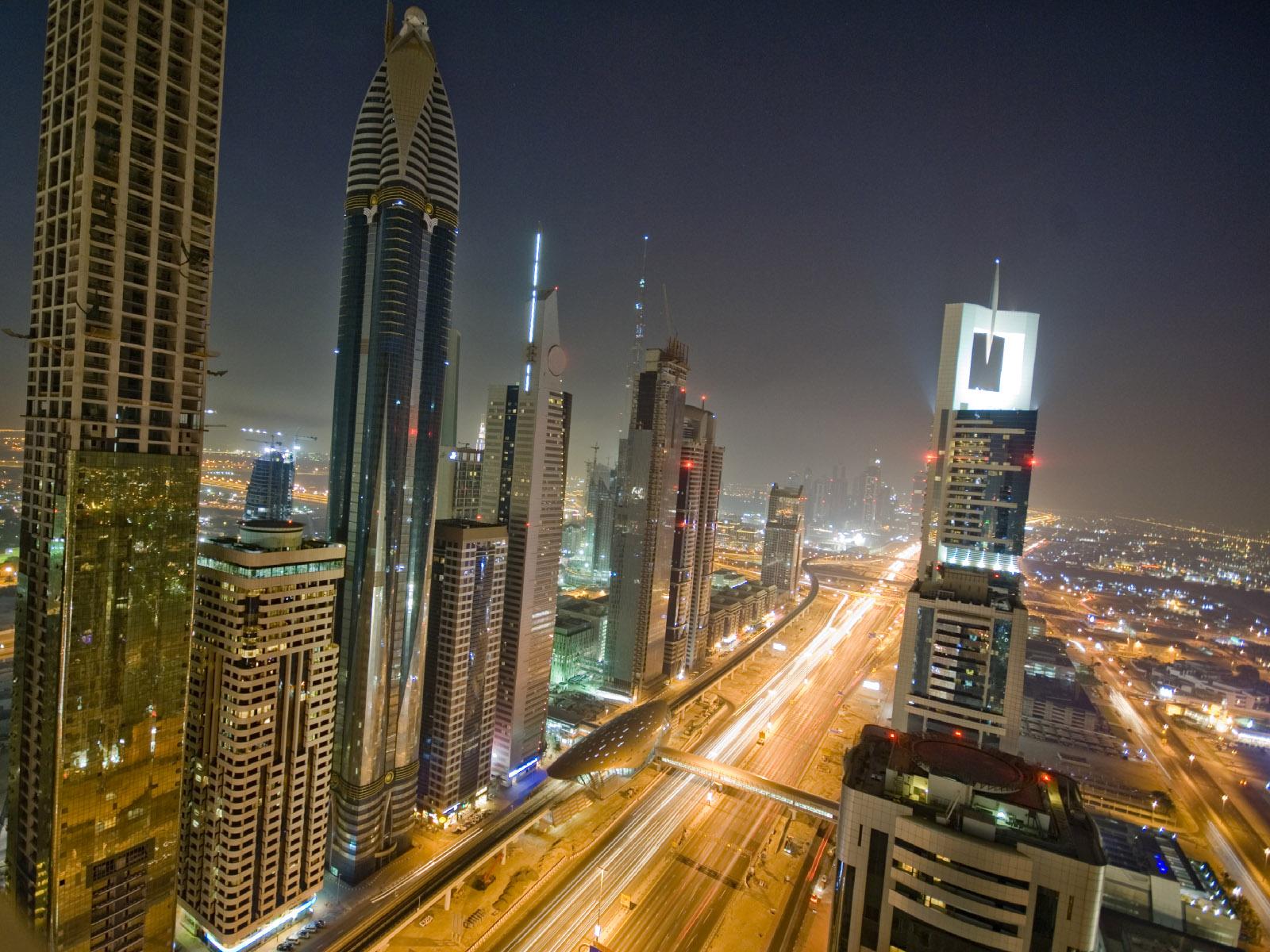

- Jarod Diamond
Highlander, Mt Hagen, Papua New Guinea (Photo: Tim Laman/timlaman.com)

Almost half of the world's people call the tropics home. The region hosts most of the world's cultural and linguistic diversity, including many of the oldest cultures on Earth, and some of the largest and fastest growing cities. Although nations in the tropics have made considerable progress in recent decades, there is marked variation in standards of living between regions, and many communities continue to suffer from poverty, poor health outcomes and limited educational opportunities.
Poverty & Urbanisation
People living in extreme poverty
Poverty is the pronounced deprivation of well-being due to insufficient income, food and services. It may be both the cause and result of poor health, lack of education, over-exploitation of natural resources, corruption, conflict or poor governance.
Although a limited measure, people living in extreme poverty are those who do not have income or consumption above $1.25 per day. The proportion of the population in developing nations of the tropics living in extreme poverty declined from 51% in 1981 to 28% in 2010. Despite this achievement, more than two-thirds of the world’s population living in extreme poverty lives in the tropics. There is considerable variation in rates of poverty alleviation between and within regions in the tropics. Most progress has occurred in South East Asia and Central America, but in contrast, the number of people living in extreme poverty in Central & Southern Africa has more than doubled over the past 30 years although the proportion has remained relatively stable.
Undernourished population
A larger proportion of people in the tropics also experience undernourishment compared with the rest of the world. Between 1990 and 2012, the prevalence of undernourishment declined in the tropics from 27% to 18% of the population, which compared with a change from 13% to 9% of the population in the rest of the world.
Urban population
For most of human history people have lived in rural environments but a transition to urban living has been underway since industrialisation. The world’s urban population exceeded the rural population for the first time in 2007. In the tropics, the urbanisation rate has increased considerably faster than globally with an increase from 31% to 45% between 1980 and 2010. However, a greater proportion of people in non-tropical regions (56%) live in cities compared with the tropics.
Slum population
In 2001, there were around 925 million people living in slums worldwide, equating to 32% of the world’s urban population. The proportion of the urban population living in slum conditions was almost twice as high in the tropics at 46% compared with 24% in the rest of the world. In absolute terms, there were almost 470 million slum inhabitants in the tropics, compared with 460 million in the rest of the world. The proportions were highest for Central & Southern Africa (76%) and Northern Africa & the Middle East (73%) .
Education & Employment
Education and employment play central roles in human, social and economic development. Education underpins active and informed citizenship, improves health outcomes and results in a greater range of options for employment. Reflecting its importance to individual empowerment and freedom, education is recognised as a fundamental human right.
Mean years of schooling
Mean years of schooling is an indicator of human capital available in an economy and society. Schooling almost doubled in the tropics between 1980 and 2010. Although in 2010 people in the tropics had 2.5 fewer years of schooling compared with the rest of the world, the rate increased faster in the tropics.
Literacy
Youth literacy rates increased in all regions of the tropics between the early 1990s and 2010, except for Oceania where it decreased slightly. Overall, literacy rates are consistently lower in the tropics than in the rest of the world.
Unemployment rate
The global unemployment rate increased slightly between 2000 and 2002 before falling consistently to 2007, in line with stronger economic growth. In 2008 and 2009 the global financial crisis resulted in major falls in economic activity and confidence, and a sharp increase in the global unemployment rate. In the tropics, however, the unemployment rate has declined steadily and only showed a small increase in 2009 before returning to pre-crisis levels.
Health
The World Health Organisation defines health as a state of complete physical, mental and social wellbeing; not merely the absence of disease or infirmity. The biological, psychological and social determinants of wellbeing impact on an individual’s life expectancy and disease burden, which are measurable and provide a degree of insight into health at national and regional levels.
The term ‘tropical health’ is used to describe the unique range of health issues that are primarily prevalent in the tropics and sub-tropics. Climate is a factor in the increased prevalence of some infectious diseases in the tropics , while the relatively poor performance of many tropical nations across a range of social and environmental factors – broadly referred to as the social determinants of health – also contributes to the higher prevalence of many diseases in the region. Undernutrition, overcrowding and limited access to health care are key factors, and a characteristic of health in the tropics is its correlation with broader development inequities.
Life expectancy
Life expectancy is comparable across populations, and is one of the most commonly used indicators of a population’s health. Life expectancy increased across all regions of the tropics in the past 60 years, and the gap between the tropics and the rest of the world has narrowed considerably. Nonetheless, in 2010 life expectancy in the tropics was on average 7.7 years lower than in the rest of the world.
Maternal and child mortality
Closely associated with development challenges such as poverty, inequality and human rights violations, women’s health is an important indicator of social health. Women are particularly vulnerable to illness and death during pregnancy and childbirth. All regions in the tropics have experienced significant decreases in maternal mortality ratios and child mortality rates. Nonetheless, the tropics represent the vast majority of these deaths, accounting for 76% of maternal deaths and 72% of under-five deaths in 2010.
Obesity & non-communicable diseases (NCDs)
The adult obesity rate in the tropics is lower than in the rest of the world, but as more people have emerged from poverty in the region, obesity is on the rise, increasing even faster than global trends. Non-communicable diseases are also a growing cause of illness, disability and death in both the tropics and the rest of the world. Many tropical nations face a ‘double burden’ of disease where the prevalence of NCDs is increasing while infectious diseases and undernutrition also remain major public health issues (see more on this issue here).
HIV and AIDS
HIV prevalence among people aged between 15 and 49 years is higher than in 1990 but has stabilised or declined in most regions of the tropics since peaking in the late 1990s. Due to greater access to anti-retroviral therapy, the AIDS mortality rate has been declining in all regions since 2005. Compared with the rest of the world prevalence and mortality rates are much higher in the tropics with most cases occurring in Central and Southern Africa.
Malaria
Malaria was formerly widespread throughout the world but the disease has largely been eradicated from temperate regions in the last century. However, it remains a major health issue in the tropics with 96% of cases and 99% of deaths from the disease occurring in the region in 2010.
Although great progress has been made on eradicating malaria in many parts of the world, the disease remains prevalent in much of the tropics
Dengue & other neglected tropical diseases (NTDs)
Dengue is a mosquito borne disease with a large global footprint. It is estimated that around half the world’s population is at risk. While only 2.4 million dengue infections were reported in 2010, WHO estimates that this is a gross underestimate with up to 100 million potential infections worldwide each year. There are no time series data for dengue, but in 2010, 72% of infections occurred in the tropics, with South Asia and South East Asia having the highest number of cases, and the Caribbean the highest incidence rate.
Other NTDs such as soil transmitted helminthiases, schistosomiasis and lymphatic filariasis cause significant disability, disfigurement and death, especially in impoverished communities in the tropics.
With the tropics predicted to expand further north and south with a changing climate (see a focus essay on this issue here), malaria, dengue and other NTDs may spread to areas that are currently free of such diseases, including into Europe and the U.S.
Tuberculosis
Tuberculosis (TB) is believed to have killed more people throughout history than any other microbial pathogen. Although treatable, it remains a serious cause of disability and death throughout the tropics, with the region having 56% of the world's new cases in 2010. Besides Oceania, tuberculosis incidence decreased in all regions between 1990 and 2010. The increase in Oceania is driven by Papua New Guinea which experiences up to 30,000 new cases of TB each year, an estimated 400 of which are multi-drug resistant.
HEALTH IN THE TROPICS
In this State of the Tropics focus essay, Professor Janet Hemingway, Director of
the Liverpool School of Tropical Medicine, discusses health care issues in the tropics.
While there has been notable progress in tackling health problems in the region, the
ongoing burden of infectious diseases, the rise of non-communicable diseases, and
limited capacity to generate accurate data are major challenges that need to
be addressed.
View this essay
ECONOMY
Harvesting coconuts to produce copra is a sustainable livelihood for many island communities across the tropical Pacific (Photo: Mark Ziembicki)
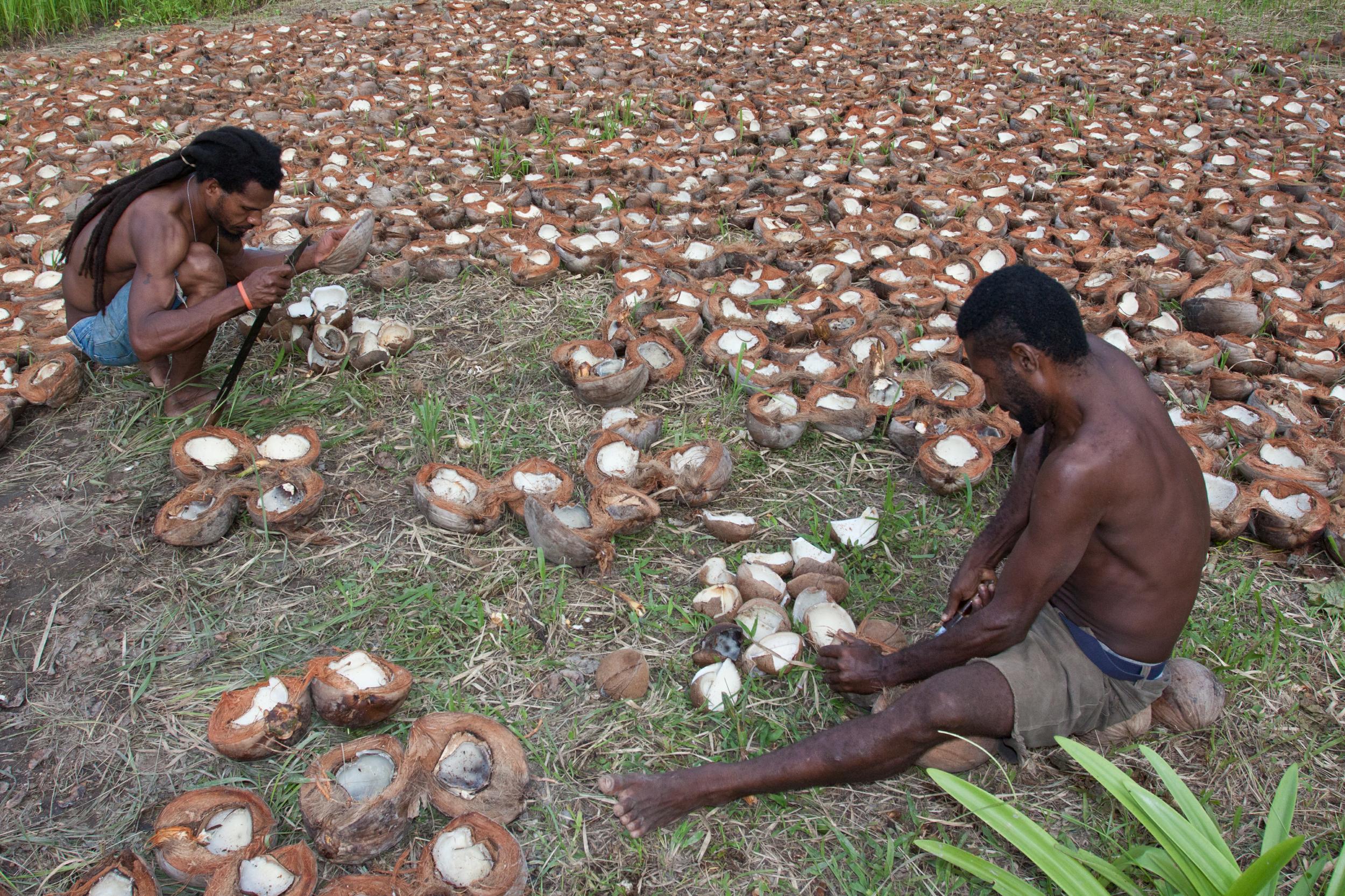
The past 60 years has seen a dramatic rise in living standards across the world. The reasons for this development are varied and complex, however economic growth is considered the most useful indicator for improvements in living standards. Nations with strong economic growth are better able to reduce poverty, strengthen political stability, improve quality of environmental protection and lower their rates of crime and violence.
Economic output & the government
Economic output
Over the last 30 years economic growth in the tropics has outperformed the rest of the world by almost 20%. The tropics currently accounts for about 19% of global economic activity, much of it driven by South East Asia and South Asia. Nevertheless, in 2010, GDP per capita in the tropics was only one-third that of the rest of the world. Growth rates in Africa and South America have also improved significantly over the past ten years, influenced by stronger demand for commodities, greater political stability and improved governance.
International trade & investment
Trade of goods & services
Trade has been a vital contributor to the development of human societies and culture for millennia. The extent of trade in goods and services provides an indication of a nation’s integration with the global economy. Exports of goods and services as a percentage of GDP have grown rapidly in the tropics over the 30 years to 2010, increasing from 25 to 47%. Over the same period, imports in the region have grown by 210%. During this time South East Asia was the largest trading region and South Asia had the greatest growth.
Foreign direct investment
Foreign direct investment (FDI) is a measure of foreign ownership of productive assets such as factories, mines and land. It is an important driver of economic growth in developing regions. FDI increased in all regions of the tropics with an overall tenfold increase across the region in the 30 years to 2010. Northern Africa & the Middle East reported the highest rate of net foreign direct investment flows in the tropics.
Science & Technology
Creating, using and passing on knowledge and innovation is a fundamental driver of human development. Science and technology, however, are not always transferable - what applies in one place may be useless in another. Many issues and challenges unique to the tropics, such as the region's climate, require regionally-specific innovations and technologies.
"No nation that wants to shape informed policies and take effective action can afford to be without its own independent capacity in science & technology"
Research & Development Investment
Investment in research and development drives innovation. R&D investment in the tropics severely lags that of the rest of the world. R&D expenditure as a percentage of GDP in the tropics was 0.6% in 2008 compared with 2% in the rest of the world.
Tertiary enrolments
The proportion of people enrolled in tertiary education is a measure of a nation's investment in higher education and innovation. Across the tropics, enrolments in tertiary education are growing rapidly, although they started from a low base. In 2010, the Caribbean had among the highest rates with 6200 enrolments per 100,000 people, largely due to Cuba's progressive education policies. By comparison, Central & Southern Africa had the lowest rate at 780 per 100,000.
Scientific & technical journal articles
Knowledge transfer is driven by the publication of peer reviewed journal articles and books. These outputs are an order of magnitude lower in the tropics (1.8 articles per 100,000 people in 2009) than the rest of the world (18.9 per 100,000).
TROPICAL UNDERDEVELOPMENT: A THING OF THE PAST?
In this essay, Dennis Trewin, former head of the Australian
Bureau of Statistics, uses updated data from the State of the Tropics
report to revisit the seminal work of Jeffrey Sachs on underdevelopment
in the tropics. Is tropical underdevelopment a thing of the past?
Clearly the answer is no. However, unprecedented growth and change
in recent years has closed the gap between the tropics and the rest of
the world, and within an appropriate policy framework can continue to
do so into the future.
View this essay
GOVERNANCE
At 64%, Rwanda has the world's highest proportion of women in parliament (Photo: Government of Rwanda)
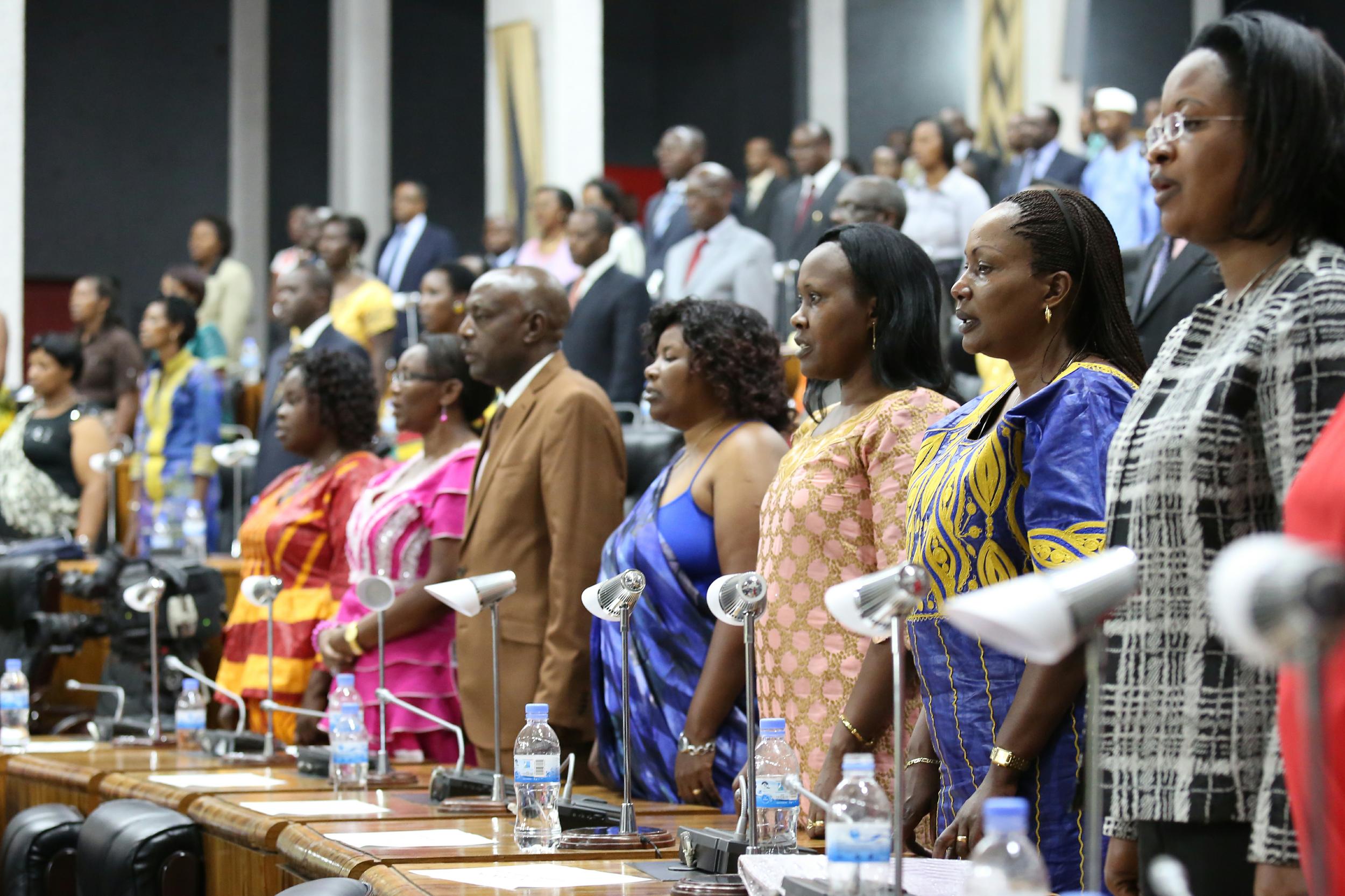
Good governance is fundamental to driving progress towards prosperity, peace and sustainability. Levels of crime and corruption, gender equality and access to essential infrastructure and communications are all indicators of how effectively a government provides for its citizens.
Corruption, crime & human security
Corruption
Corruption affects all levels of society but tends to have the greatest impact on the poor. It increases the cost and lowers the quality of public services, and can limit access to essential infrastructure, education, health care and other key needs. Due to its clandestine nature, corruption is difficult to detect and measure, and therefore to tackle. For the three World Governance Indicators assessed ('Control of Corruption'; 'Rule of Law' and 'Regulatory Quality') most regions of the tropics performed more poorly than the rest of the world. Northern Africa & the Middle East had the highest rates of corruption, while the Caribbean performed better than everywhere else on the 'Control of Corruption' indicator.
Homicide rate
The intensity and organisation of violent crime can take many forms, and can have a major impact on the wellbeing of victims and communities. While representing only a small fraction of overall crime, intentional homicide is one of the most serious offences in civil society and is thus used here as a measure of the prevalence of crime. In 2004, the tropics on the whole reported a homicide rate of 14.5 per 100,000 population (about 375,000 murders). This was almost three times that of the rest of the world at 5.6 per 100,000. South America (at 32.9), Central & Southern Africa (21.6) and Central America (17.0) had the highest rates in the tropics.
Refugees
Around the world millions of people have had to flee their home countries to escape war, genocide, torture and persecution. Globally, although refugee numbers fell almost 30% in the two decades to 2010, several million people are currently classified as refugees while many more are considered internally displaced people (IDPs) or asylum seekers. In 2010, of the main countries where refugees originated from, 8 out of 10 were in, or partly in, the tropics.
Gender equality
Improving opportunities for women is associated with improvements across a range of social and economic indicators. Increased earnings, opportunities and choices are coupled with additional social benefits as they are associated with delayed marriage, lower fertility and improved health and survival rates of children. Healthy, educated and empowered women benefit their families, communities and entire nations.
Women and education
Education is a key contributor to improving gender equality and is recognised as one of the most powerful instruments for reducing poverty and developing a foundation for sustained economic growth. Although the gap has closed significantly in recent decades, in 2010, the female to male ratio of adults with secondary education in the tropics was 0.75, well below the rest of the world at 0.86, let alone equality at 1.0.
"The education and empowerment of women throughout the world cannot fail to result in a more caring, tolerant, just and peaceful life for all."
Women in national parliament
A principle of democratic government is that parliament should represent and express the will of the people. Relative to the proportion of the population, women are grossly under-represented in national parliaments worldwide. Although there has been an improvement in recent decades, on average, only 1 in 5 parliamentarians are women, with similar ratios in the tropics and the rest of the world. Some nations, however, particularly those emerging from years of conflict, have developed proportional representational electoral systems which are more likely to have a better gender balance. In Rwanda, 64% of members of parliament are women - the highest rate in the world.
Infrastructure
Gross capital formation
Gross capital formation refers to the proportion of current economic activity that is being invested for longer term economic and social returns. This includes investment in key infrastructure such as roads, buildings and machinery. Worldwide, the rate of capital formation has been declining. In the tropics, however, there is a notable upward trend, with growth averaging 0.5% of GDP per year. There is considerable variation between regions, with South Asia increasing the most.
"We are living in the most explosive era of infrastructure expansion in human history. While there are obvious social and economic benefits of new infrastructure, the contemporary avalanche of development is having severe impacts on the environment. It is critical we develop methods and policies that minimise environmental costs while maximising socioeconomic benefits."
Access to water sources
Access to clean and safe drinking water is considered the single most important factor influencing public health. Although the gap has narrowed, less people have access to drinking water in the tropics (81% of total population in 2010) compared to the rest of the world (93%). Tropical regions in Africa had the least access to improved water sources.
Access to improved sanitation
Sanitation refers to the provision of facilities and services for the safe disposal of human wastes, including through services such as garbage collection and wastewater disposal. Inadequate sanitation is a major cause of disease, and is a major issue in the tropical nations due to the climate, rapidly growing populations and increased urbanisation. By 2010, 50% of the tropical population had adequate access to improved sanitation compared with 73% in the rest of the world. Tropical regions in Africa also had the least access to sanitation facilities.
Information Technology & Communication
The rapid growth of information technology and communications has facilitated social and economic development and global coordination of business, trade, governance, and security on an unprecedented scale.
Mobile phone subscriptions
Over the past decade the mobile phone has emerged as one of the fastest growing consumer technologies ever introduced. Although mobile phones have become the dominant means of communication in most tropical regions (with approximately 68% uptake across the region by 2010) the tropics still lag behind the rest of the world (at 83%). There is significant disparity between regions, and rural populations are generally much less connected. Nevertheless, market liberalisation, along with technological and commercial innovation, means that uptake rates continue to grow rapidly. In Myanmar (Burma), for example, mobile phone use increased seven-fold between 2010 and 2013.
Internet users
Internet access has spread quickly in the tropics. Growth rates of 30% per annum in the decade to 2010 were twice that of the rest of the world. However, there is great variability in access between regions. Internet use is lowest in African regions and South Asia. Poor telecommunications infrastructure, tight market control, low rates of personal computer ownership, high access costs, low literacy rates and a lack of content in local languages are factors limiting access in these regions.
Kumbul village, Huon Peninsula, Papua New Guinea (Photo: Mark Ziembicki)
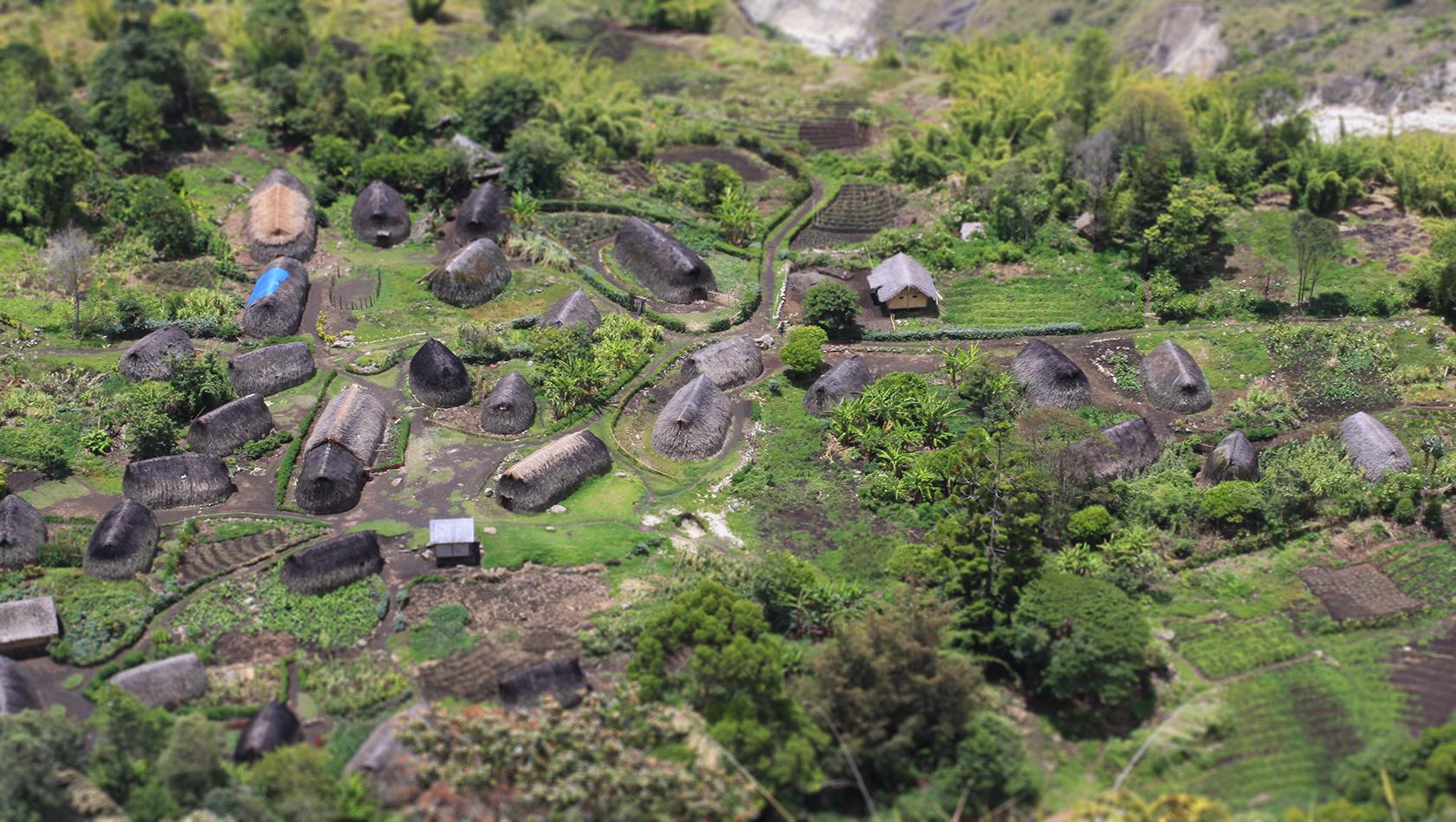
Mostly, at least for one species, and at least for now.
The trends identified in the State of the Tropics assessment illustrate the tropical region's central importance to the world's future. While it documents notable improvements across a range of social and economic measures, it highlights persisting social inequalities and increasing pressures on the natural environment. What cannot be ignored is the inextricable link between natural systems and human health, well-being and prosperity. Decisions made in the region now will affect economics, development and the environment on a global scale for a long time to come.
“By taking a unique perspective from within the tropics, by and for the people that live in the region, and acknowledging the critical need to balance ongoing development and human wellbeing with environmental sustainability, State of the Tropics provides a base camp for the long but increasingly achieveable climb to a more prosperous global future”
For more information and to download the State of the Tropics 2014 Report visit the project website:
Credits
CONTENT
State of the Tropics team
PRODUCTION & EDITING
Mark Ziembicki
INFOGRAPHICS
Ann Penny
PHOTOGRAPHY
Mark Ziembicki (markzphoto.com)
Juergen Freund (juergenfreund.com)
Tim Laman (timlaman.com)
Additional photos as attributed under Creative Commons licensing
VIDEO
Dean Miller (deanmiller.com.au)
Alex Vail (academic website)
Jon Rawlinson (jonrawlinson.com)
Additional stock footage under license
VIDEO EDITING
Anthony Brenton, Mark Ziembicki
State of the Tropics is a collaboration between:





